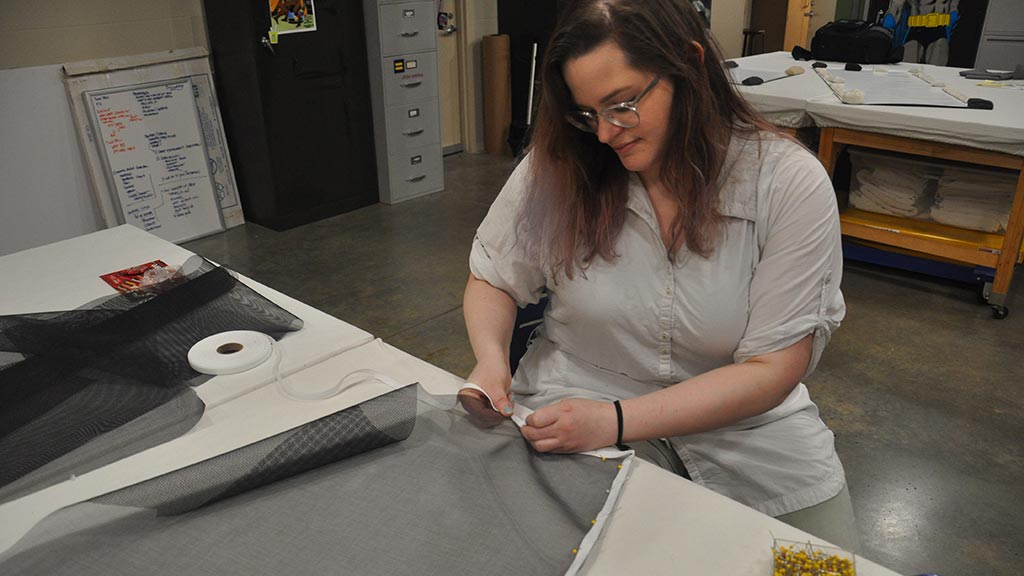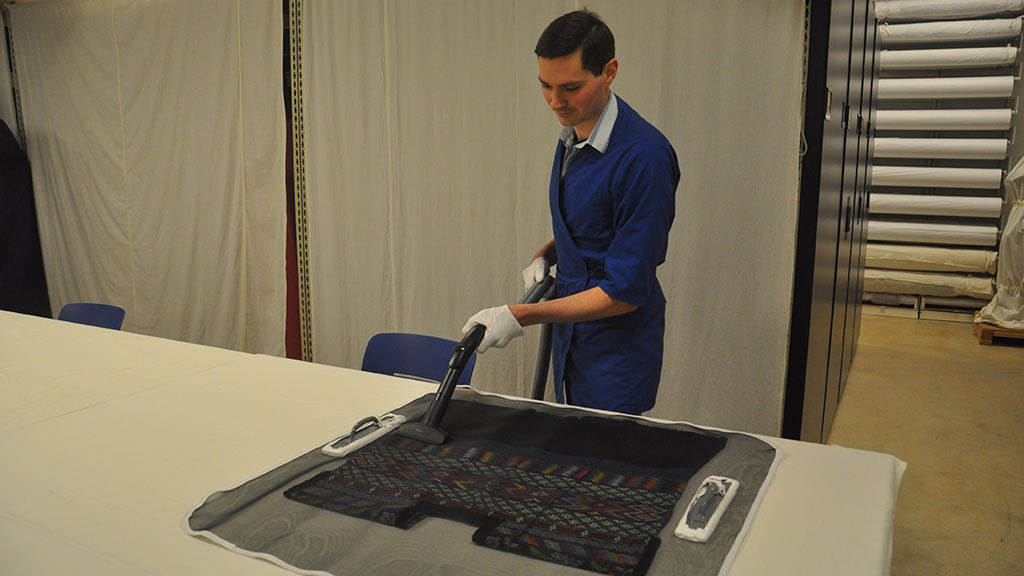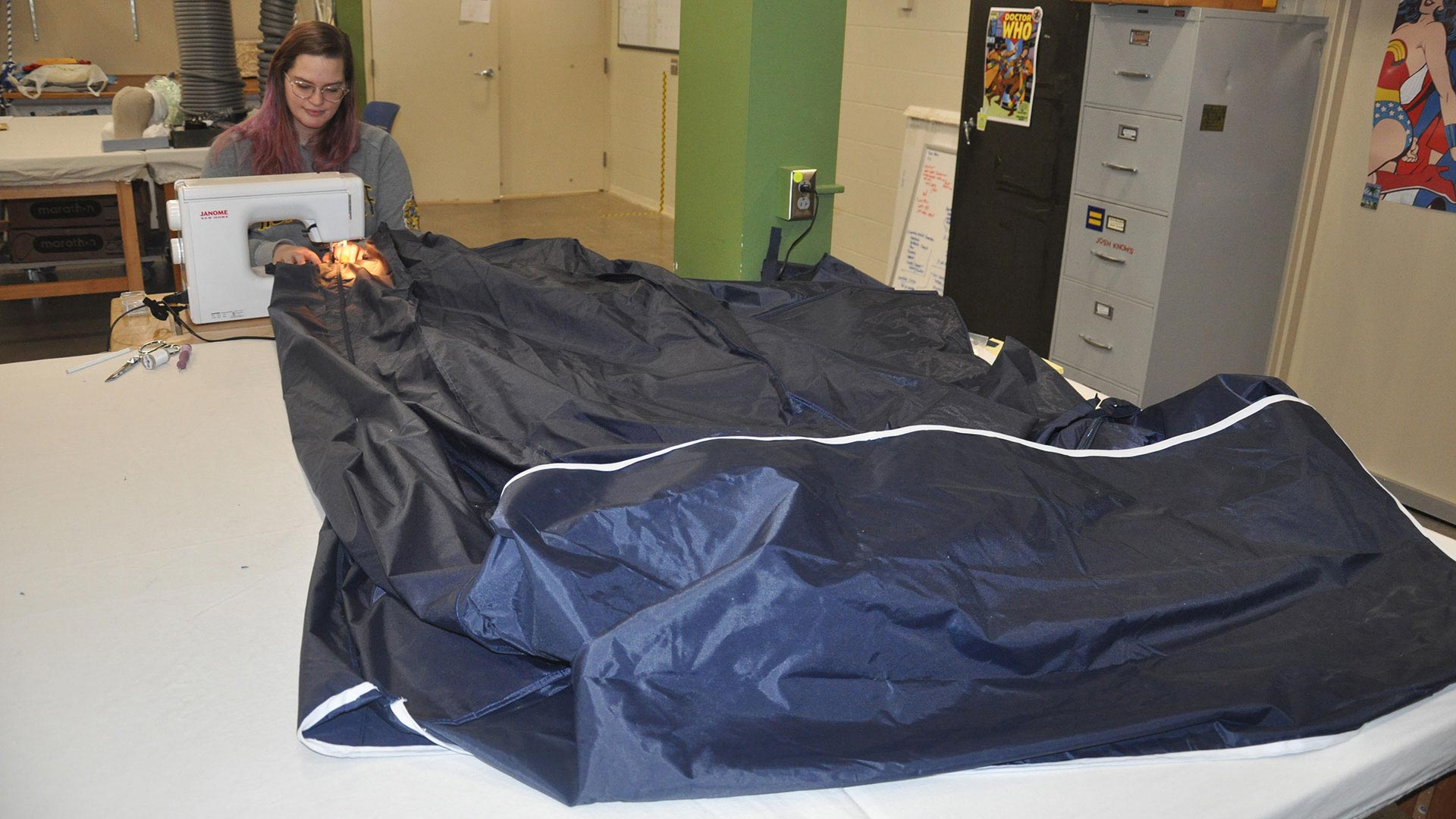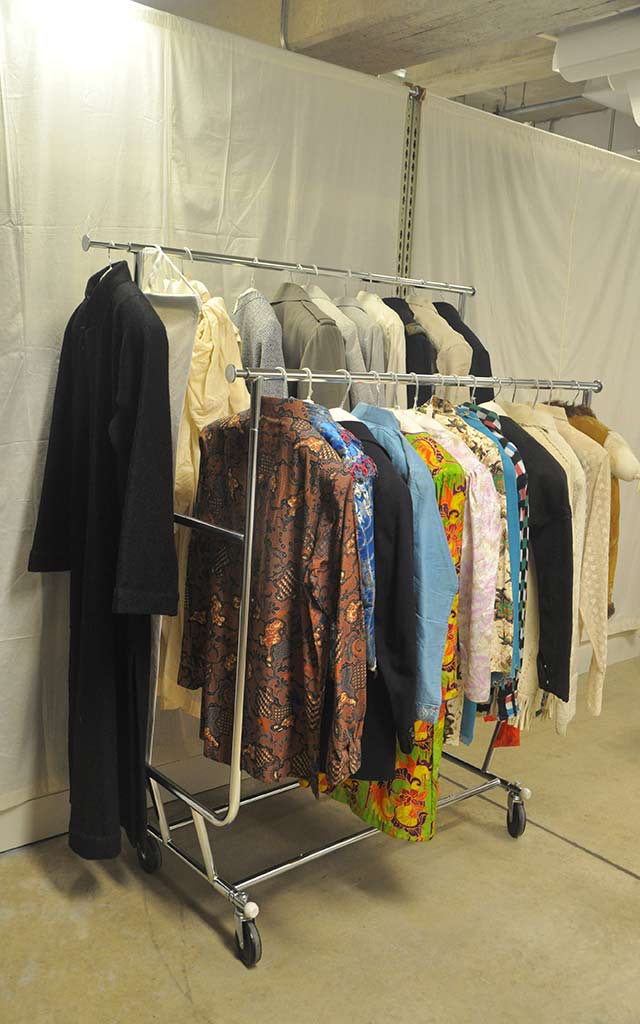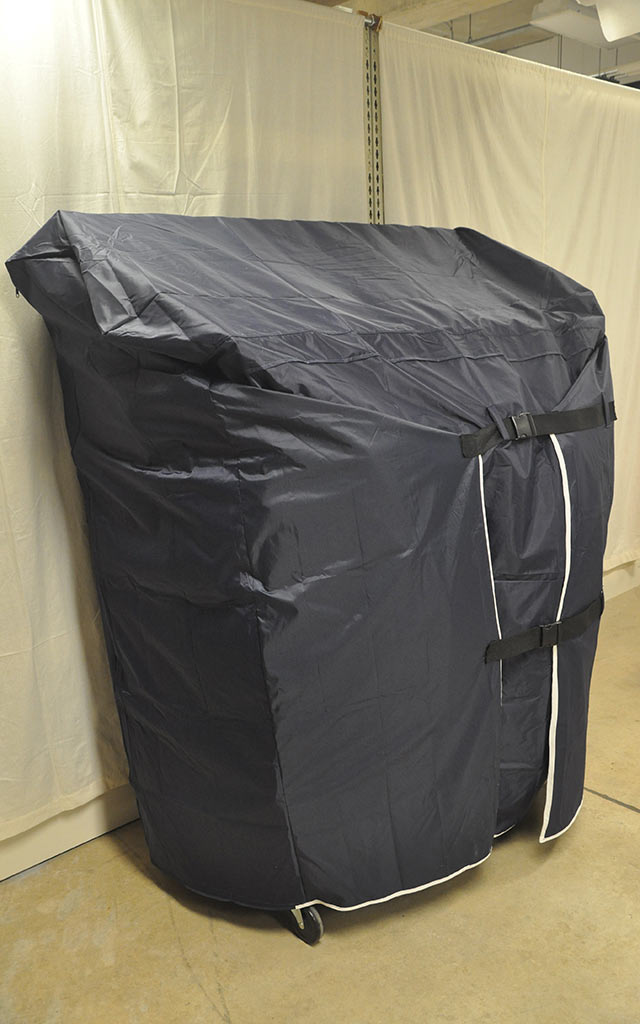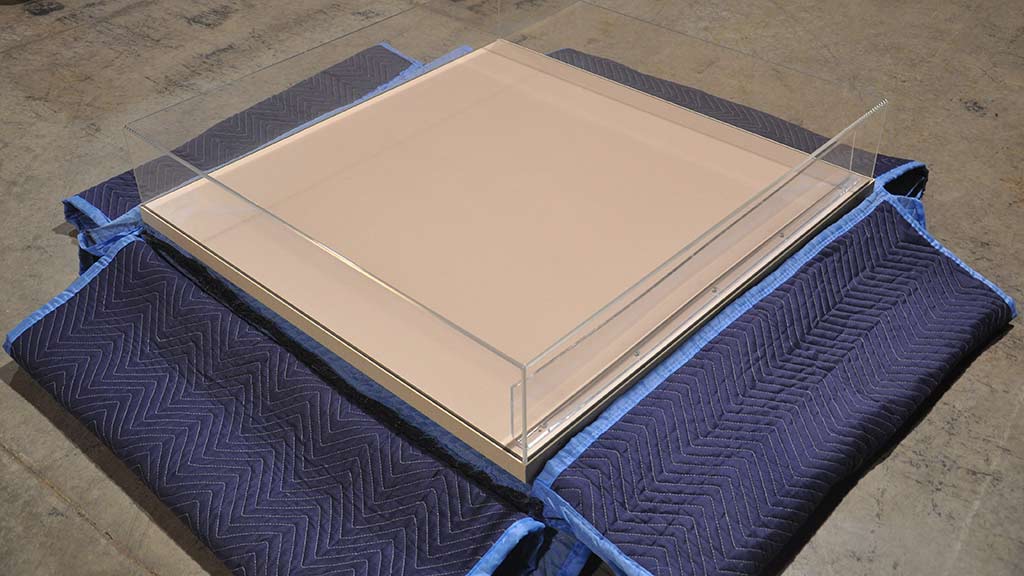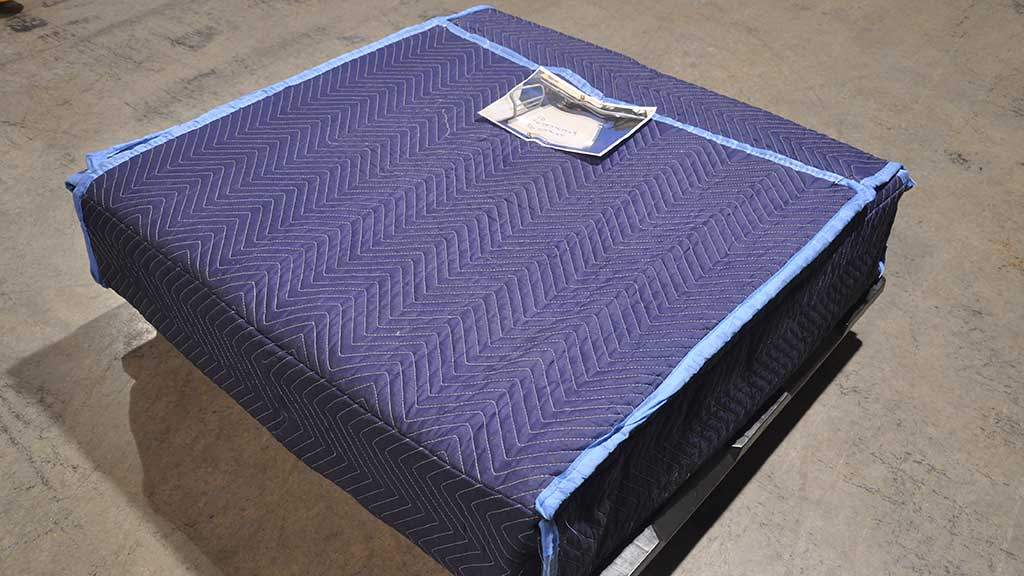
Sewing For Spurlock
- Post Date: 06/05/2019
- Author: Leslie Straus
- Reading Time: 2 minute read
While a graduate student with the School of Information Science, I have worked in Spurlock Museum’s Registration Section for the past year. Last semester, I was given the opportunity to join the Collections Management Section too, and I began using my sewing skills to assist them with a variety of projects. I minored in theater costume design as an undergraduate and am ecstatic to find my unique sewing experience so valuable to Spurlock.
For my first project, I created a set of screens that are used when cleaning textiles. These screens are a protective barrier between a vacuum nozzle and textile. They prevent the vacuum from sucking up beads, threads, buttons, and other delicate pieces from the artifact but still enable us to get rid of any dust or dirt that accumulates on the fabric’s surface. After cutting out screens—not unlike ones used on windows—I sewed bias tape along the edges, so the textiles won’t be harmed from the screens’ hard, jagged edges.
Collections also needed a custom cover for a double-wide rod garment rack. Custom hangers were made to properly support various pieces of clothing on the rack, but the whole rack needed a custom cover large enough to protect the textiles from light exposure and dust. To create the cover, I altered two smaller garment rack covers, measuring the rack and clothes to ensure that the cover conformed to the size and shape. This protective layer still had to allow access to the garments without having to remove the covering. To allow this access, I left the zipper edges where possible. Where it was not, I created a large flap that could be fastened and adjusted for any changes in the volume of coverage needed.
In my final project, I sewed fitted moving blankets for wall vitrines to protect the plexiglass from scratches and other wear and tear that might be experienced while in transit. The vitrines were measured and moving blankets were cut to the exact specification needed to ensure a tight fit, covering all six sides of the case. Because these blankets are densely padded with a messy filler material, blanket edging was used to create a clean border. Additional padding was added to provide more of a protective barrier to the corners of each vitrine.
Upon graduating this May, I look forward to continue working in the museum field and building upon my time and experiences at Spurlock.
-
- Share: 𝕏
- Subscribe to Newletter
- Giving
